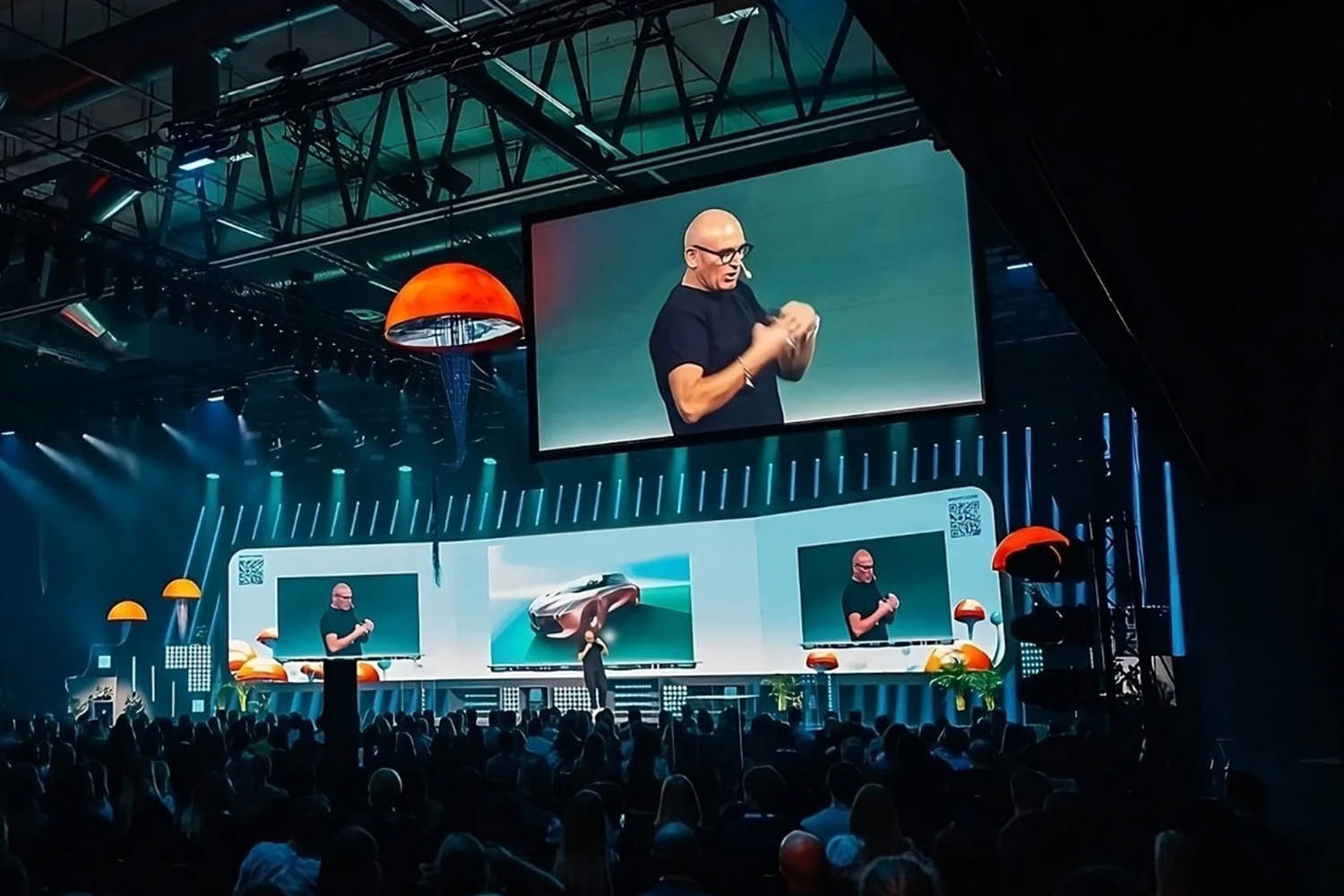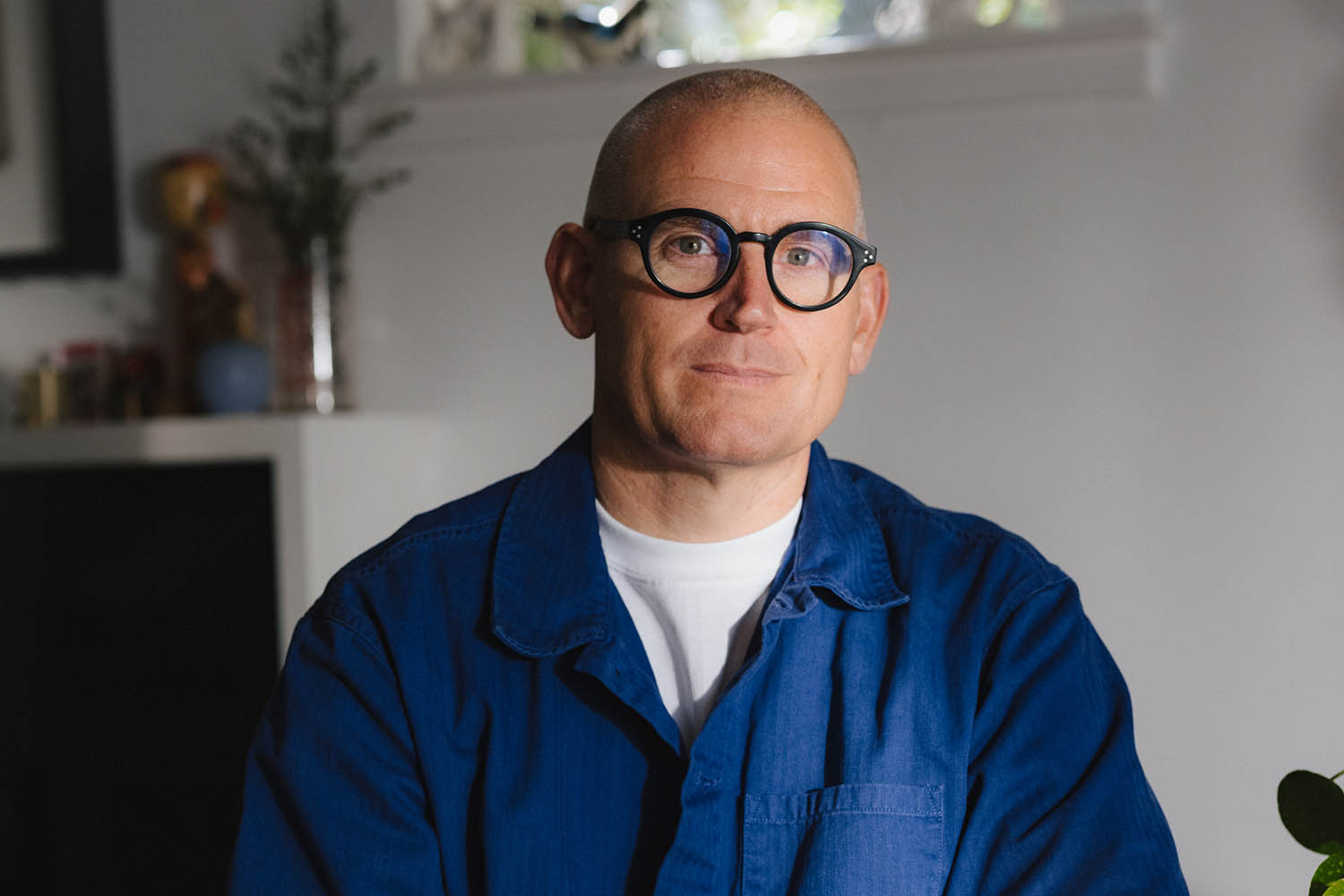Human beings have long been obsessed with the future, from ancient Greek divination and Nostradamus to 21st-century tarot. Today financial trend forecasting is big business, and tech companies are determined to convince us their products are the most forward-looking. In 2022 Meta, Amazon, Apple, Netflix and Google collectively spent $177bn on research and development, and in 2021 the global astrology market was valued at a staggering $12.8bn. And yet, designer and reluctant futurist Nick Foster is certain, human beings remain resolutely awful at anticipating what’s to come. “Predictions are mostly nonsense,” he tells me over video call from his studio in Oakland, California – peering back at me through thick-rimmed glasses. “Most people who make predictions make a thousand of them, and then ignore the 999 that were way off. If somebody could actually predict the future, they’d be the richest person on earth.”
You may not be familiar with Foster’s work, much of it conducted behind closed doors due to strict NDAs and commercially sensitive contracts. “Sounds very shadowy, doesn’t it?” he says, when I ask him to elaborate. For decades, he has helped shape much of our understanding of what the future might look like. He has worked for companies including Dyson, Apple, Nokia, Sony and Google, where until 2023 he was head of design at X, Google’s secretive research and development facility dedicated to new tech. “It’s a unique place,” he says, mysteriously. “E xperimental, exploratory parts of these big, wealthy organisations have time and money to do this type of work.”
Essentially, he says, his job involved speaking to staff from technical backgrounds – computer scientists, roboticists, biologists, and “asking a lot of dumb questions” to understand what a nascent technology could do. “I’d move from one meeting with nuclear physicists about neighbourhood-scale nuclear fusion, go straight into another room to have a conversation about worn robotics to help with mobility, then into another room where I’d be talking to somebody about brain-controlled computer interfaces.” His team would then start to develop objects or services that could be built from them, and put together prototypes.
If you type ‘futuristic’ into Google Images, all the pictures smack of a stalled imagination
In 2021 he was awarded the title of Royal Designer for Industry, the highest accolade for a British designer; fellow RDIs include Paul Smith, Jony Ive and the late Vivienne Westwood. When asked what title should be listed next to his name, he felt uncomfortable with “futurist”: “It’s probably my working-class roots showing, but it doesn’t feel like a real job.” So he invented the term “futures designer”, explaining “the work I do is focused more explicitly on longer-term horizons than nearer-term products. But it is a made-up thing. I don’t think there’s a degree you can do in it.”
In his new book, Could Should Might Don’t, Foster brings together two decades’ worth of future-focused reflections. He points to our pitfalls, such as short-term thinking and failing to anticipate the unexpected. “A lot of what we’re dealing with right now,” he says – climate crises, political upheaval and ever-increasing polarisation – “is the result of a lack of foresight and rigorous thinking about the future from our predecessors. We’re accidentally setting a ton of time capsules ourselves for future generations to fix.”
A book about futurism comes with certain expectations. Perhaps you are picturing the cover: a sleek, business-oriented self-optimisation manual for budding tech bros (“thirsty LinkedIn,” Foster shudders). In fact, it is much more playful and exploratory, taking in a dizzying array of references, from The Jetsons to eschatology, Star Trek to Dubai’s Museum of the Future, Mitchell and Webb quotes to the Wagnerian concept of Gesamtkunstwerk.
Foster wants us to think about the future in radically new ways. “If you type the word ‘futuristic’ into Google Images,” he says, “you’ll see a really homogeneous set of pictures. It absolutely smacks of a stalled imagination. At any one time, something may feel futuristic, but when we look back on it, it seems silly.” He points to changing styles. “Different hemlines, different jeans shapes, different heel heights. We have to have humility: the things we think are really sensible now will feel idiotic in 20 years. Every nightclub now has an 80s night where everyone dances to Take On Me and wears funny neon clothes. But in 2035 those same clubs will have 2020s nights, and people will ironically dance to Taylor Swift like it’s a joke – but it made sense at the time.”
Born in Derby in 1976, the birthplace of the Industrial Revolution, Foster grew up with an awareness of the city’s “proud history of engineering and manufacturing”, partly thanks to his father, who was a railway engineer “until privatisation came through – God bless Margaret Thatcher.” Gadgets and technology were everywhere, from TV shows like MacGyver and The A Team to space shuttle launches. Foster’s weekends were spent playing with Lego and listening to Walkmans. “I was always interested in how things got built,” he recalls. He toyed with the idea of becoming an architect before realising he was more interested in machines and objects, leading him to study industrial design. He worked for James Dyson in the 90s, then returned to university, receiving a Masters from the Royal College of Art in 2001. “I think that balance of the two – being able to think critically about design and art history, but also being able to execute things – is why I’ve drifted towards futures-oriented work.”

Next year's model: Nick Foster speaking in Stockholm in 2024
Foster speaks with authority, approaching topics with thoroughness and enthusiasm. When I ask, however, about how ethical concerns he raises in the book should be applied to real-world workplaces, he is reluctant to venture into specifics. These are former (and potential future) employers after all, leading Foster to offer only cautious, non-committal answers on some of the pressing challenges Big Tech poses. When I ask whether tech companies should invest in the future by paying their fair share of tax, he says the topic is “very tricky territory for me”, and “totally out of my wheelhouse”. Although his power to influence certain decisions is limited, he says he would “much rather be on the inside of these organisations, trying, than on the outside, shouting”.
His Midlands accent still filters through at times, softened by 13 years in California, but his upbringing continues to inform his work. Any thinking about the future, he argues, should take into account the experiences of ordinary people, focusing on the small, messy details that make life real, rather than overarching technological solutions for all the world’s ills.
“When I’m around people talking about the future, be they analysts or financiers, they don’t seem to be talking about the people you and I grew up with,” he says. “They seem to be talking about some abstract version of humanity. For me it’s about bringing up aunt Jane at Asda on a Wednesday lunchtime: what does she think about AI and VR and robotics and cyber dogs?” This stops discussions being so hypothetical. “It makes people go, ‘Actually, yeah, hang on. I do have an aunt or uncle. Let me think about them for a second.’ It’s not about trying to improve the life of some visionary overlord – absolutely the opposite. I want everybody’s lives to be part of the conversation.”
He is aware that many young people today struggle to view the future with the same sense of optimism as previous generations. “I was privileged to feel like the future was exciting,” he says. “People growing up now don’t feel the same. The term ‘Ambient adolescent apocalypticism’ is creeping into the common parlance, which is this feeling of a new generation looking towards the future and not liking what they see, for very good reason.”
Does he feel tech companies have fully considered the ramifications of their products, such as automation, AI and self-driving cars? “Some companies are doing better at it than others,” he says diplomatically. “Unfortunately, long-termism is a really hard thing to argue in the face of short-term gain. It’s no criticism of my previous employers, but I’ve been in meetings where you say, ‘Hang on a second, this might be a problem in 20 years.’ And they’re like, ‘W ell, a lot of time to think about that, so w e’ll think about it later.’”
Surprisingly for a “middle-aged white guy in Silicon Valley”, Foster is neither a tech evangelist nor interested in grand utopian visions (an attitude he refers to as “toxic positivity”). With innovations such as machine-learning and AI, he is “curious”, rather than excited.
“I’m epileptic, and had [robot-assisted] open-heart surgery many years ago, so I’ve experienced some of the technologies that are used in those industries. I think they’re going to rapidly accelerate diagnostics, drug delivery and drug development – that’s exciting. But likewise, I’m also terrified by some of what is being discussed.”
Could Should Might Don’t: How We Think About the Future by Nick Foster is published by Canongate Books on 11 September (£22). Order a copy at observershop.co.uk for £19.80
